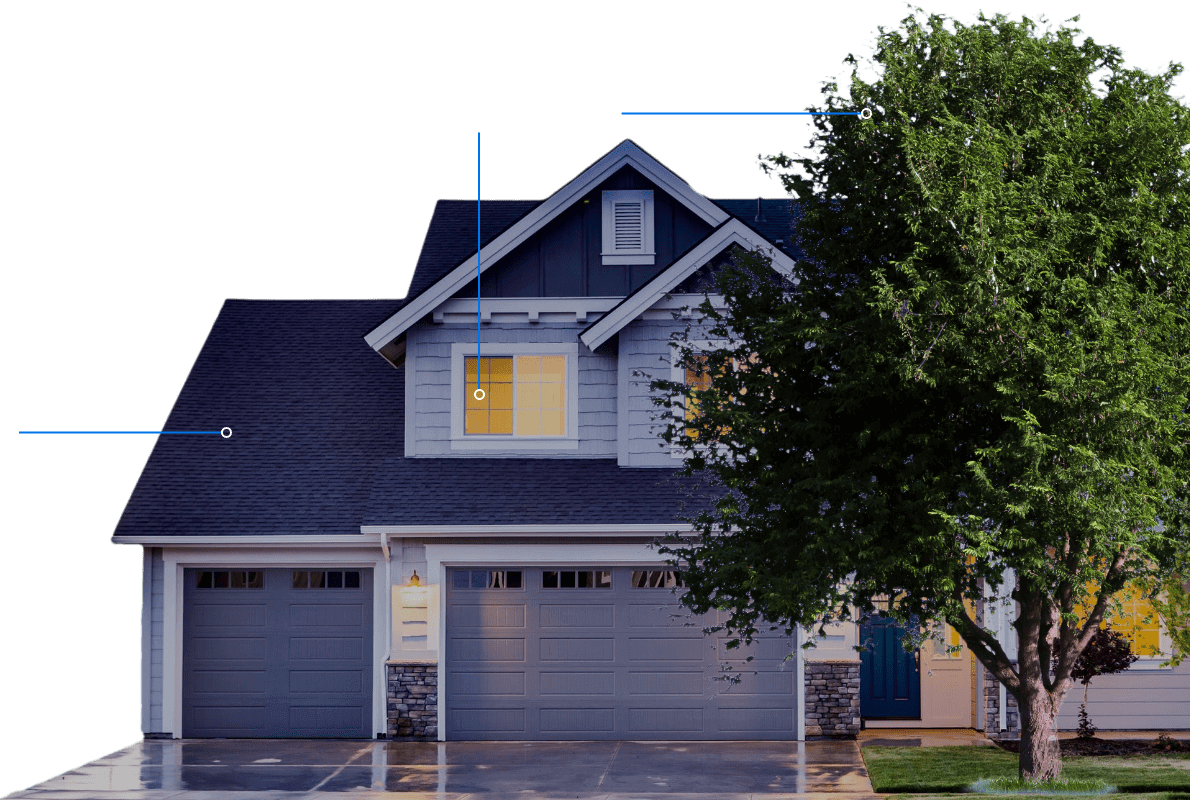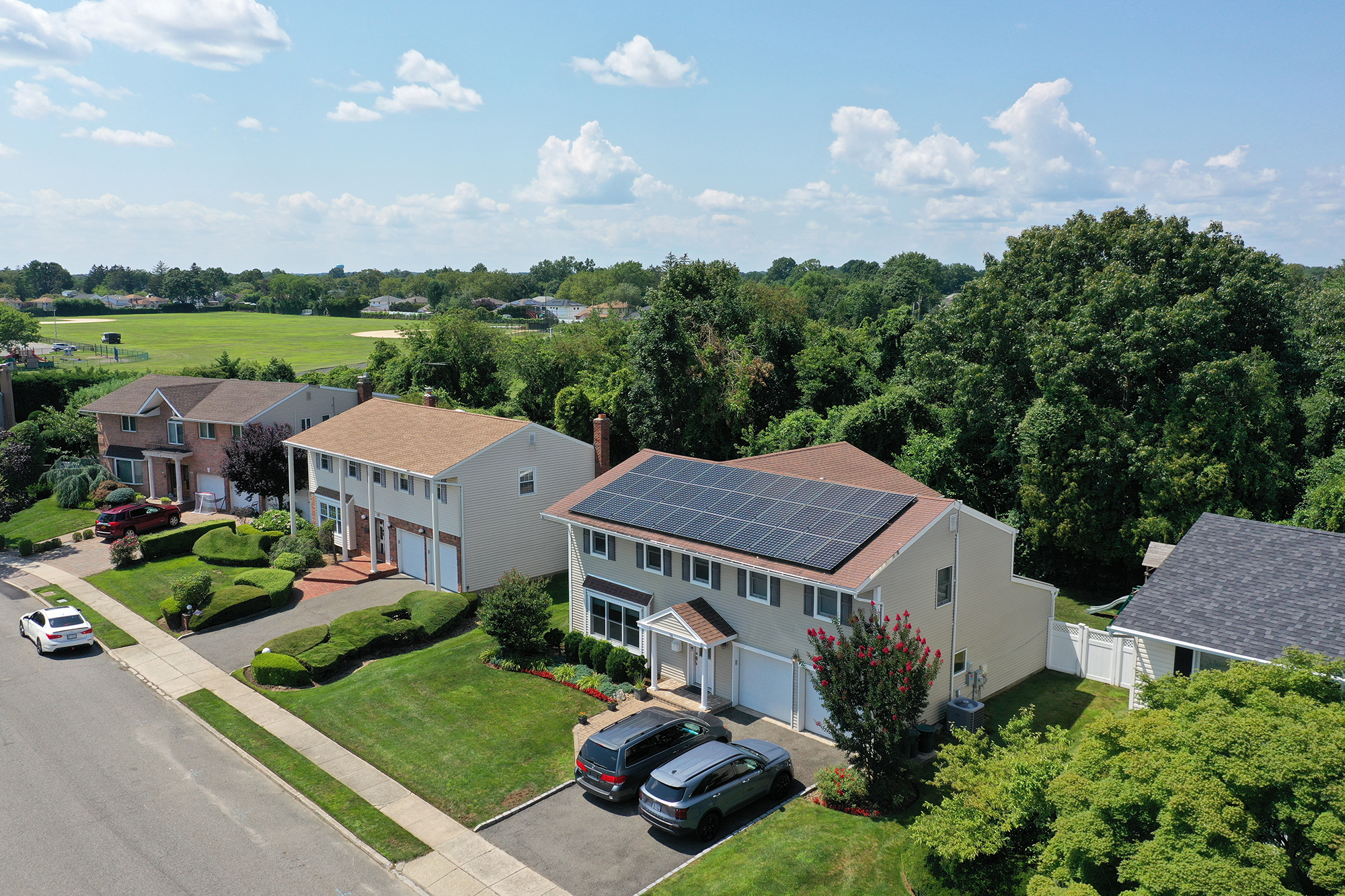Understanding Your Options
Harness the power of the sun for a cleaner, greener life.

Harness the power of the sun for a cleaner, greener life.
Our in-house design team will consider your home’s average electricity usage, roof space and orientation, and shading from trees and buildings for your custom system design. We also provide several options to bring clean energy to your home, whether that’s financing, leasing, or purchasing.
Learn More

Installation
Submit a photo of your recent electricity bill for our solar experts to review. By looking at your current usage, and any future plans for an electric vehicle, a new hot tub, or a backup battery, we design and plan your new custom solar system.
Our team of technicians will coordinate an assessment of your property. In many cases, we can quickly, safely, and thoroughly conduct assessments by drone, collecting accurate measurements and information about the surrounding areas. In some cases, our team will need to conduct an in-person evaluation of your roof structure and work with you to plan the location of your new backup batteries.
We have a dedicated permitting department who works directly with your town’s local building department to obtain the necessary construction permits for your project. We submit the engineering plans and manage all the paperwork for you!
After the permit is approved, we are ready to schedule a date for your installation! Our project management team works with you to select a day to begin installing on your property. They’ll remain in close communication the entire time in case extreme weather conditions cause safety concerns and unforeseen changes.
Your dedicated Site Foreman will lead the team of solar installers who will first install the racking system to the roof or ground, then attach and connect the solar panels to your external meter and interior electrical panel. Next they will mount backup batteries and electric vehicle chargers. And last but not least, give you a formal introduction to your new solar energy system.
After your equipment is in place, we will schedule a final inspection of the property by your local jurisdiction to close out your building permit. Depending on your region, your local utility provider may require an additional inspection to finalize integration of your solar energy system with the local power grid.
Your system is up and running, producing solar energy and storing it in your backup batteries for an emergency. You are connected to the net metering system so that you build up energy credits when your system over produces energy and utilizes the credits during periods of bad weather or nightfall. You are monitoring everything on your mobile app and are in control of your own energy!
Choosing a solar installer for your home is an important decision. It’s critical to select a contractor with a strong track record, certified by industry agencies like NABCEP, and that offers comprehensive warranties. A reputable installer will also take care to appropriately size your solar system to match your home’s energy needs, and educate you on the tax credits and incentives available to make your investment more affordable.
Learn More

We only use the most efficient solar panels on the market, which produce 60% more energy than conventional panels and enable us to outfit your home with an unparalleled solar system. From the day that your system goes live, you can have complete confidence in its performance, reliability, and value for years to come.
Learn More

Keep your home powered through blackouts by adding battery storage to your solar system. The Tesla Powerwall stores solar energy, detects outages, and automatically switches to be your main power source when the grid goes down. The energy stored in your Powerwall can also be used when you need it most, like during blizzards, tropical storms, and other grid-damaging weather events.
Learn More

Power up without leaving your driveway. By pairing your solar panels with a home car charging station you can fully fuel your electric vehicle within hours and pay as low as 8 cents/kWh. Most of our customers save upwards of $1,000 a year just by charging their electric vehicles with solar.
Learn More

Our Work


We’d love to power the whole world with solar, but we’ll be honest if your home isn’t ideal for solar panels. Luckily, community solar is available in our region. Also known as shared solar, or community distributed generation (CDG), this program grants you access to clean energy from a central solar array to offset your utility bill.


Individual energy needs, available roof space, roof orientation, and shading all factor in to determining if your home is suitable for solar. In 60 seconds or less, our solar experts can help you determine your home’s eligibility. Call 516-837-3459 or email us.


When the power goes out in your home, the solar panels will stop working and automatically disconnect from the grid to maintain the safety of the utility workers attempting to restore power. Once the power is restored, your system will continue production after a few minutes.
If it is important for you to maintain power during a blackout, we recommend adding battery storage to your system. With battery storage, your system will disconnect from the grid during an outage and switch over to using the energy in your batteries, allowing your panels to continue production and keep your home powered.


Roof integrity is our first priority. In order to approve your home’s ability to go solar, we carefully inspect your roof and grade it based on age, layers, condition, and a physical stress test. On installation day, we use a thoroughly tested product, similar to materials used on skylights, to prevent your roof from leaks.
We also include a squirrel guard, which is installed around your panels to keep animals from nesting beneath them and causing any degradation to your system. Our guards are constructed from a dark coated metal wire mesh, which is not typically visible from street-level and helps maintain the aesthetics of your home.


If you purchased your system it could add 4% or more to the value of your home. According to Zillow, New York homes sold for an average of $23,989 more! If you financed or leased your system you can either pay it off early or transfer the loan or lease to the new homeowner.


Net metering is a program offered by some utilities, like ConEd and PSEG, that allows grid users to send unused electricity to the grid, then reclaim that energy when they need it, such as during the night or in the winter.
Net metering uses a crediting system in which you earn energy credits for excess solar that you send to the grid, and your meter will “spin backwards”. Once a month, your utility company will review the energy that you use from the grid, and if there are any credits in your energy bank they will be shown on your bill and can be carried over to the next month. Many homes generate extra credits in the spring and summer, which can be stored in your energy bank and used to cover your bills through the winter months when your system does not produce as much energy.